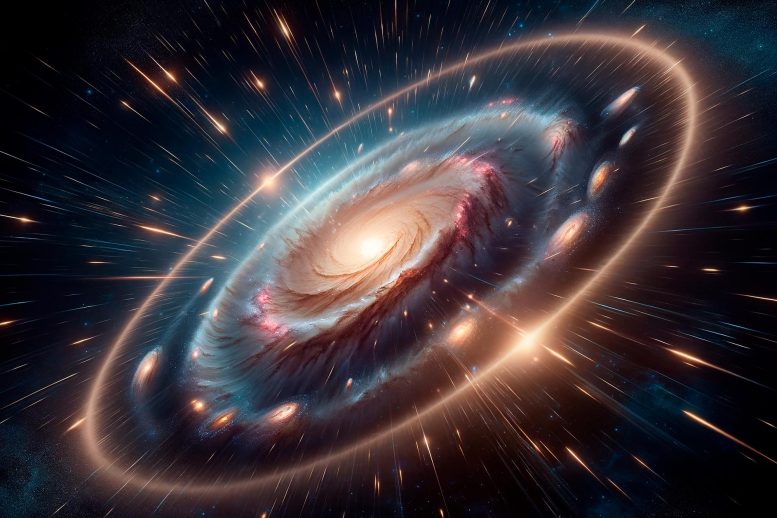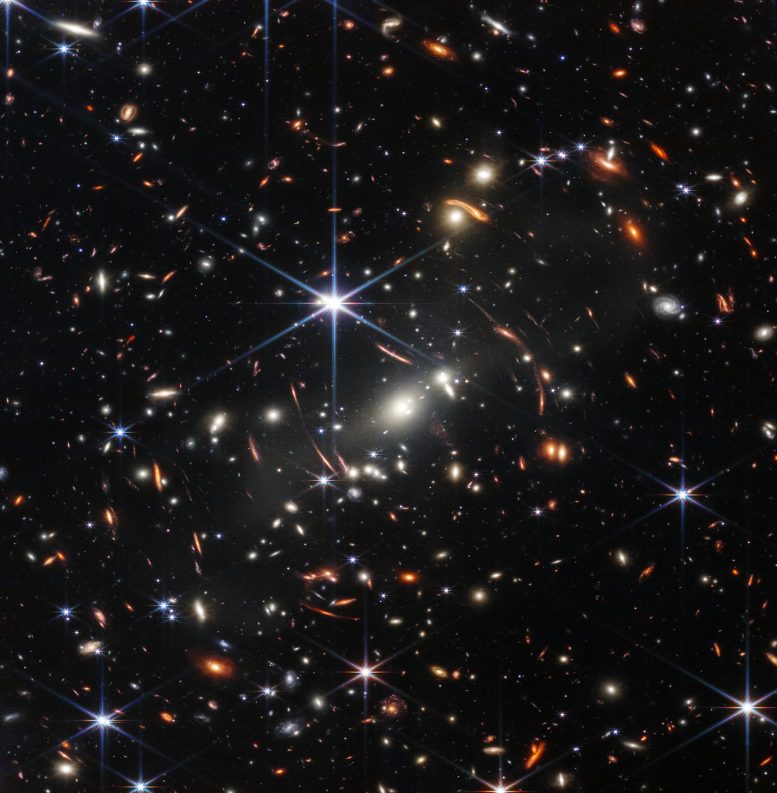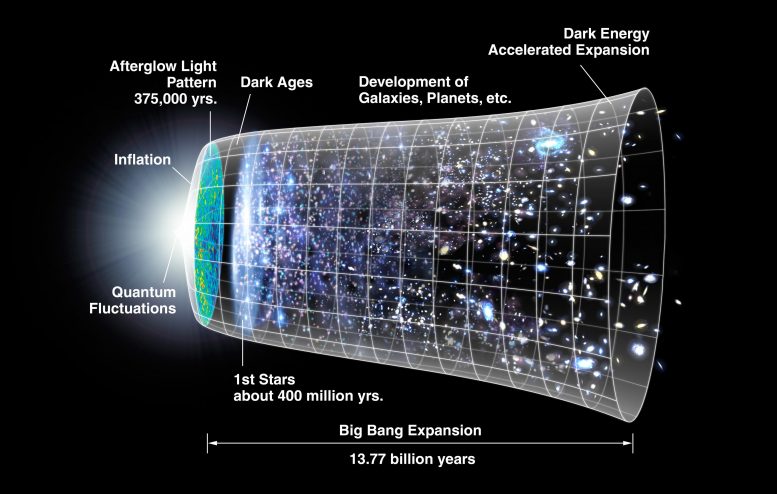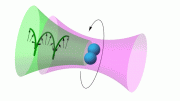
Astronomers have discovered that the universe’s expansion is accelerating, likely due to dark energy, as described in the Lambda CDM model. However, inconsistencies in expansion rate measurements, known as the Hubble tension, are prompting research into new theories and modifications to existing models.
The universe is expanding at an accelerating rate, possibly driven by dark energy. However, the Hubble tension, a discrepancy in expansion rate measurements, challenges current models and spurs ongoing research for explanations.
Astronomers have known for decades that the universe is expanding. When they use telescopes to observe faraway galaxies, they see that these galaxies are moving away from Earth.
To astronomers, the wavelength of light a galaxy emits is longer the faster the galaxy is moving away from us. The farther away the galaxy is, the more its light has shifted toward the longer wavelengths on the red side of the spectrum – so the higher the “redshift.”
Time and Distance in the Universe
Because the speed of light is finite, fast, but not infinitely fast, seeing something far away means we’re looking at the thing how it looked in the past. With distant, high-redshift galaxies, we’re seeing the galaxy when the universe was in a younger state. So “high redshift” corresponds to the early times in the universe, and “low redshift” corresponds to the late times in the universe.

The James Webb Space Telescope’s deep field image shows a universe full of sparkling galaxies. This is the deepest and sharpest infrared image of the distant Universe to date. Known as Webb’s First Deep Field, this image of galaxy cluster SMACS 0723 is overflowing with detail. Credit: NASA, ESA, CSA, and STScI
But as astronomers have studied these distances, they’ve learned that the universe is not just expanding – its rate of expansion is accelerating. And that expansion rate is even faster than the leading theory predicts it should be, leaving cosmologists like me puzzled and looking for new explanations.
Accelerating Expansion and Dark Energy
Scientists call the source of this acceleration dark energy. We’re not quite sure what drives dark energy or how it works, but we think its behavior could be explained by a cosmological constant, which is a property of spacetime that contributes to the expansion of the universe.
Albert Einstein originally came up with this constant – he marked it with a lambda in his theory of general relativity. With a cosmological constant, as the universe expands, the energy density of the cosmological constant stays the same.
Imagine a box full of particles. If the volume of the box increases, the density of particles would decrease as they spread out to take up all the space in the box. Now imagine the same box, but as the volume increases, the density of the particles stays the same.
It doesn’t seem intuitive, right? That the energy density of the cosmological constant does not decrease as the universe expands is, of course, very weird, but this property helps explain the accelerating universe.
Lambda CDM: The Standard Model of Cosmology
Right now, the leading theory, or standard model, of cosmology is called “Lambda CDM.” Lambda denotes the cosmological constant describing dark energy, and CDM stands for cold dark matter. This model describes both the acceleration of the universe in its late stages as well as the expansion rate in its early days.
Specifically, the Lambda CDM explains observations of the cosmic microwave background, which is the afterglow of microwave radiation from when the universe was in a “hot, dense state” about 300,000 years after the Big Bang. Observations using the Planck satellite, which measures the cosmic microwave background, led scientists to create the Lambda CDM model.
Fitting the Lambda CDM model to the cosmic microwave background allows physicists to predict the value of the Hubble constant, which isn’t actually a constant but a measurement describing the universe’s current expansion rate.
But the Lambda CDM model isn’t perfect. The expansion rate scientists have calculated by measuring distances to galaxies, and the expansion rate as described in Lambda CDM using observations of the cosmic microwave background, don’t line up. Astrophysicists call that disagreement the Hubble tension.

The universe is expanding faster than predicted by popular models in cosmology. Credit: NASA/WMAP Science Team
The Hubble Tension
Over the past few years, I’ve been researching ways to explain this Hubble tension. The tension may be indicating that the Lambda CDM model is incomplete and physicists should modify their model, or it could indicate that it’s time for researchers to come up with new ideas about how the universe works. And new ideas are always the most exciting things for a physicist.
One way to explain the Hubble tension is to modify the Lambda CDM model by changing the expansion rate at low redshift, at late times in the universe. Modifying the model like this can help physicists predict what sort of physical phenomena might be causing the Hubble tension.
For instance, maybe dark energy is not a cosmological constant but instead the result of gravity working in new ways. If this is the case, dark energy would evolve as the universe expands – and the cosmic microwave background, which shows what the universe looked like only a few years after its creation, would have a different prediction for the Hubble constant.
But, my team’s latest research has found that physicists can’t explain the Hubble tension just by changing the expansion rate in the late universe – this whole class of solutions falls short.
Exploring New Models
To study what types of solutions could explain the Hubble tension, we developed statistical tools that enabled us to test the viability of the entire class of models that change the expansion rate in the late universe. These statistical tools are very flexible, and we used them to match or mimic different models that could potentially fit observations of the universe’s expansion rate and might offer a solution to the Hubble tension.
The models we tested include evolving dark energy models, where dark energy acts differently at different times in the universe. We also tested interacting dark energy-dark matter models, where dark energy interacts with dark matter, and modified gravity models, where gravity acts differently at different times in the universe.
But none of these could fully explain the Hubble tension. These results suggest that physicists should study the early universe to understand the source of the tension.
Written by Ryan Keeley, Postdoctoral Scholar in Physics, University of California, Merced.
Adapted from an article originally published in The Conversation.![]()









Completely agree that new explanations are needed. I have developed one such explanation. I think it is valid but have not been able to get detailed professional feedback. Based on a few assumptions and a lot of calculations have arrived at the rather radical position that dark energy is a characteristic of atomic hydrogen. See paper at: https://www.academia.edu/106245152/230826_Dark_Energy_Intrinsic_to_Atomic_Hydrogen_pdf
Would love to get a sanity check.
These findings remind me of a work from P.A.M Dirac back in the 1930’s. In simple words: An empty space expanding “creates” particles. Less basic: particles from the “quantum gas” sort of “condense” into this space. Question: Could these particles behave like DM or DE?
another universe’s gravity is tugging at ours.
Perhaps we live on the inside surface of a black hole, that we call our observable universe. The incoming matter from around it, fuel the expansion and creation of matter particles. Neat way to explain the energy that keeps electrons etc moving perpetually, and the expansion as that surface grows. I’ve heard this idea in lectures by Leonard Susskind.
Could be that because connectivity between local filaments is so much greater that connectivity involving much longer filaments reaching nonlocal objects, supposing a focused gravitational flow basis for filaments means abundant local filaments generate extra redshift and extra brightness for local objects.
Replace “greater that” with “greater than” of course.